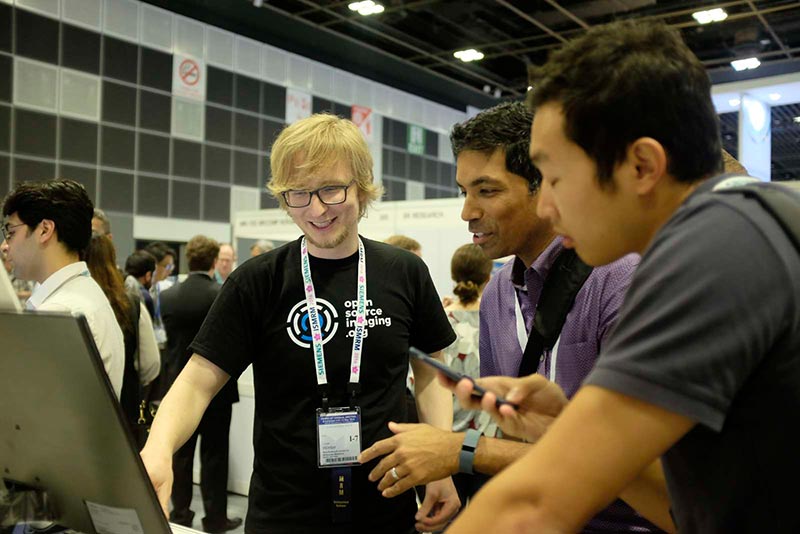Happy Birthday Paul Lauterbur!
As a birthday gift, we have launched OpenSourceImaging.org on 6th of May 2016. Few days later the open source imaging initiative (OSI²) [1] has been successfully presented at the 24th annual meeting of the International Society for Magnetic Resonance in Medicine (ISMRM) in Singapore, the biggest MR technology based conference with about 5000 abstracts. We have received overwhelming interest and feedback from graduate students, postdocs, professors, former and current industry employees alike underlying the need for affordable open source MRI devices.
The conclusions of the many conversations are: We need more open source research and development for more “black box” free operation and education. We need an emphasis on collaboration and allow for more flexible, controlled and reproducible research. And we need more open source lab equipment.

Lukas Winter, MDC-Berlin (left) with Krishna Nayak (middle) and Wayne Chen (right), University of Southern California discussing the open source imaging initiative at the electronic poster.
The most common denominator however for an open source approach in MR development is the need for affordable high end medical devices that close the wide gap in available health care worldwide [2]. Many fellow researcher feel that MR technology and its application is more complex and costly, than it could be which is preventing high end clinical diagnosis to reach most of the population worldwide.
This is also one of the motivations for the MR value initiative launched at the conference by ISMRM president Jim Pipe. He points out that “…there are really four costs to total cost of ownership [of an MRI device]. There’s the scanner, the maintenance, the staffing, and then everything else – including power.” [3]
Thinking globally and thinking long term, open source can address all these points:
- Reducing scanner hardware costs by outsourcing research and development to the community
- Reducing maintenance costs by transparent documentation [4]
- Reducing staffing by reducing complexity and improving open documentation and education for the systems used
- And solving “everything else” by innovation, which – taking into account the vast knowledge of the research and maker community – should be a piece of cake!
Carrying on the momentum of the conference we will be updating the project section with more soft- and hardware projects in the next weeks. Any OS projects we should know about (MR hardware parts, useful lab equipment, software)? Let us know: info@opensourceimaging.org. After that we will storm and tweak some brains about how to implement the many ideas discussed, that will bring us a step closer to our vision: Building a complete open source MRI device – From the community to the community.
Stay tuned and stay open!


